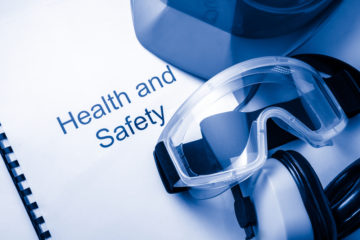Become a Health and Safety Representative
If your school/college does not currently have a Health and Safety Representative, why not consider becoming one?
Being a Health and Safety Representative in a school/college is a very rewarding position.
You will assist members and your Senior Leadership Team (SLT) to identify and resolve issues before they lead to accidents, as well as investigate accidents and conduct inspections.
The vast majority of senior leaders and employers welcome the input of Health and Safety Representatives, as it gives them another set of eyes and free expertise.
They also know that workplaces with a Health and Safety Representative are healthier, safer and more productive. Evidence shows that in workplaces with a Health and Safety Representative, there are 24% fewer injuries.
The HSE/HSENI also support the vital contribution Health and Safety Representatives and trade unions make to maintaining and improving health and safety in the workplace.
There is no additional responsibility on Health and Safety Representatives - any deficiencies remain the responsibility of the employer, not the Health and Safety Representative. The responsibilities on Health and Safety Representatives are the same as any other employee - to take reasonably practicable care of yourself and others.
Where the NASUWT is recognised, which is in the vast majority of workplaces, Health and Safety Representatives are entitled to paid time off to undertake their duties and to access training, which the NASUWT provides free of charge to members.
The NASUWT also holds an annual Health and Safety Seminar for all members, and an alternating annual seminar for members in Scotland and Northern Ireland.
For more information, please contact the NASUWT.
Temperature and ventilation
As the summer approaches and temperatures begin to rise, the issue of excessive temperatures in schools will return.
Excessive classroom temperatures are not only uncomfortable, but they are also a health and safety hazard, as excessive heat can aggravate existing medical conditions.
Excessive heat in classrooms has also been shown in many studies to impact on pupils’ learning, with a 1°C increase in temperatures linked to a 2% decline in learning.
The effects of extreme temperatures are even more striking when considering that each additional school day with a temperature in the 30s (°C) reduces pupil achievement by one sixth of a percent of a year’s worth of learning.
Disadvantaged pupils also suffer up to three times the impact of excessive temperatures than other pupils.
Adequate ventilation is also a key legal requirement and all rooms must be adequately ventilated. A simple way of doing this is through the use of a carbon dioxide detector, which can be purchased cheaply from a range of suppliers.
The NASUWT has produced detailed guidance on temperature and ventilation.
Post-pandemic health and safety considerations
The Covid-19 pandemic shone a light on the poor state of health and safety in many schools and colleges, particularly with regard to risk assessment.
Some of the lessons that have been learned through the pandemic will continue to be relevant in the weeks, months and years ahead.
Even before the pandemic hit, many schools routinely experienced outbreaks of pathogens such as norovirus and ‘bugs’ often went through schools rapidly, impacting not only on health, but also on learning.
Some of the methods employed to combat coronavirus can help to prevent other pathogens spreading and/or lead to generally healthier workplaces. These include enhanced ventilation, monitoring of the workplace, enhanced cleaning and disinfection routines and regular hand sanitisation.
These should all continue post-pandemic.
The value of appropriate isolation has also been demonstrated and schools should continue to insist on isolation for specific pathogens, such as norovirus, where people should stay at home for 48 hours after the last symptoms have stopped.
As we hopefully move out of the pandemic period, the focus on health and safety and risk assessment should remain.
Every school and college has a legal duty to do everything reasonably practicable to ensure the health, safety and welfare of staff and pupils and all foreseeable risks must be assessed.
The knowledge and experience that has been developed through the pandemic should leave schools and colleges in a strong position.
The NASUWT has produced guidance on risk assessments across a range of subjects, and these can be found on the NASUWT website.
There are also videos of past webinars on the NASUWT’s Crowdcast channel.
Educational visits (England)
The Department for Education (DfE) has stated that, subject to mitigations such as the bubbling of pupils, educational visits can resume.
Since 17 May, schools have also been able to undertake domestic residential visits and the DfE has produced specific guidance on this, available on the DfE’s Covid-19 Operational Guidance Annex C: domestic residential educational visits.
International visits remain prohibited.
Schools must ensure that, in addition to the usual risk assessment process, any visits must also be fully risk assessed to account for Covid-19, including items such as ensuring adequate bubbling, social distancing, and arrangements if a pupil or staff member becomes symptomatic whilst on the visit.
Your feedback
If you require a response from us, please DO NOT use this form. Please use our Contact Us page instead.
In our continued efforts to improve the website, we evaluate all the feedback you leave here because your insight is invaluable to us, but all your comments are processed anonymously and we are unable to respond to them directly.

